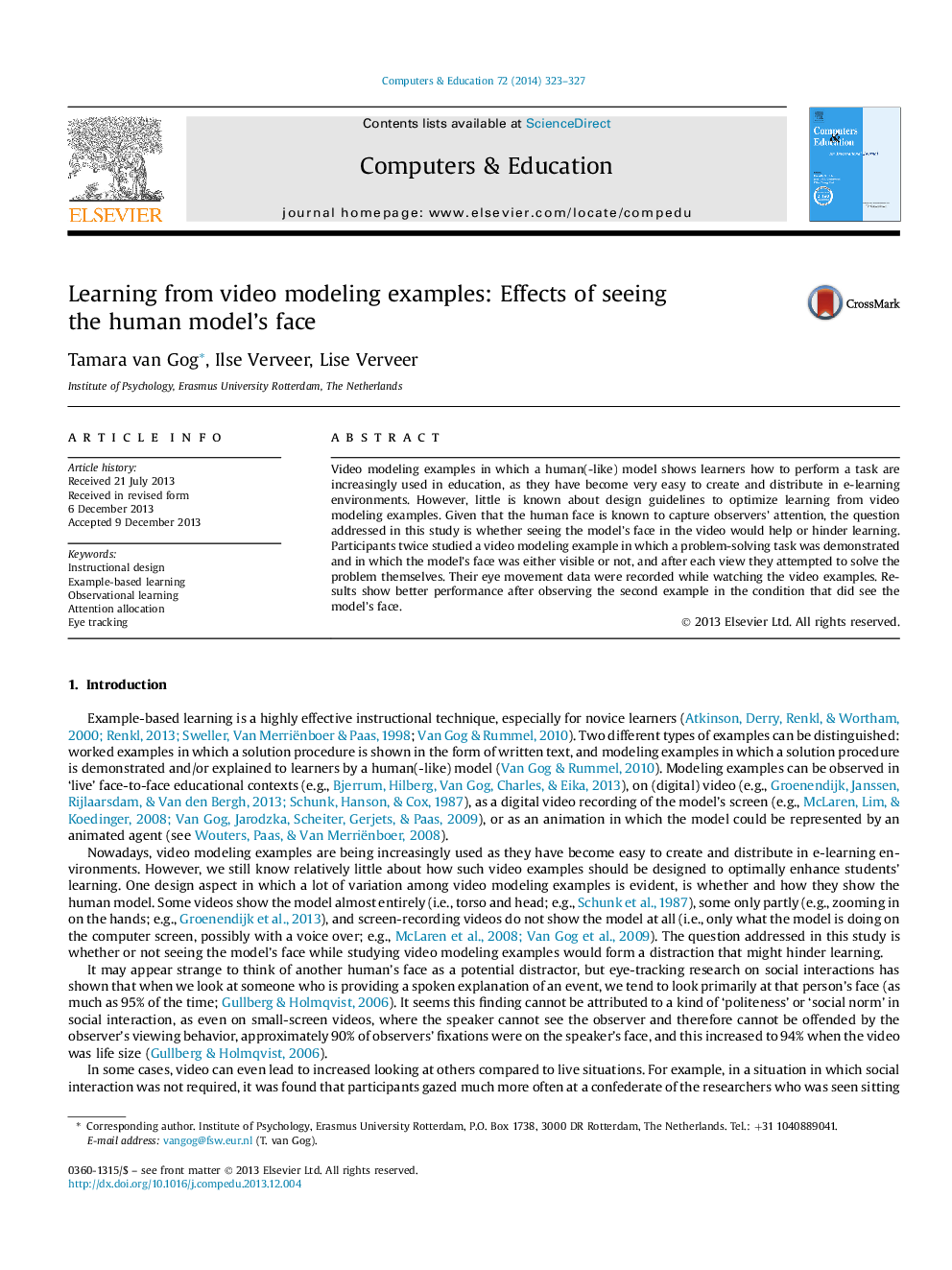| Article ID | Journal | Published Year | Pages | File Type |
|---|---|---|---|---|
| 6835315 | Computers & Education | 2014 | 5 Pages |
Abstract
Video modeling examples in which a human(-like) model shows learners how to perform a task are increasingly used in education, as they have become very easy to create and distribute in e-learning environments. However, little is known about design guidelines to optimize learning from video modeling examples. Given that the human face is known to capture observers' attention, the question addressed in this study is whether seeing the model's face in the video would help or hinder learning. Participants twice studied a video modeling example in which a problem-solving task was demonstrated and in which the model's face was either visible or not, and after each view they attempted to solve the problem themselves. Their eye movement data were recorded while watching the video examples. Results show better performance after observing the second example in the condition that did see the model's face.
Keywords
Related Topics
Social Sciences and Humanities
Social Sciences
Education
Authors
Tamara van Gog, Ilse Verveer, Lise Verveer,
